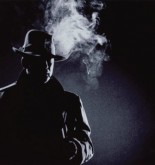Creating Real Detectives
 I’ve been working on my cozy mystery for months now, outlining and writing, re-outlining and re-writing, and there was still a major flaw: the detectives didn’t seem real. They had no depth, no growth opportunities, no spark. They could’ve been replaced by an inanimate object and had the same impact on the story. Needless to say, this was a major problem.
I’ve been working on my cozy mystery for months now, outlining and writing, re-outlining and re-writing, and there was still a major flaw: the detectives didn’t seem real. They had no depth, no growth opportunities, no spark. They could’ve been replaced by an inanimate object and had the same impact on the story. Needless to say, this was a major problem.
Then fate intervened and I attended a Mystery Writers meeting last week. The guest speaker was Greggory LaBerge, Director of the Forensics and Evidence Division with the Denver Police Department.
LaBerge was a fantastic speaker. He walked us through the history of crime labs and how forensics actually works. He was sharp too (I suppose you’d have to be in his position). I got the impression he remembers every case he’s ever worked on, which is substantial given thousands of cases flow through the Denver crime lab every year. Seriously, someone asked him about a case from 15 years ago and he knew definitively that it was still unsolved.
But my biggest takeaway was insight into the psyche of a homicide detective. He talked about how the position attracts attention seekers, wannabe heroes, but how important it is to filter those people out. That homicide detectives must be in it for the victims, not themselves. “Pride is dangerous, especially in this position,” LaBerge said.
He talked about how homicide detectives have a choice to either get down on humanity or to approach cases using the scientific method. How he made the choice to stay detached because otherwise it becomes too much to emotionally bear. “That’s why,” he said, “there are so many crusty old detectives.“
His words impacted me. They gave me so many ideas for how to make the detectives in my story living, breathing characters. To give them their own conflicts and plot arcs. To do justice to the real people who do that job every day.
What I’m reading: The Mystery of the Blue Train by Agatha Christie
What I’m listening to: Katy Perry – Roar
Leave a Reply